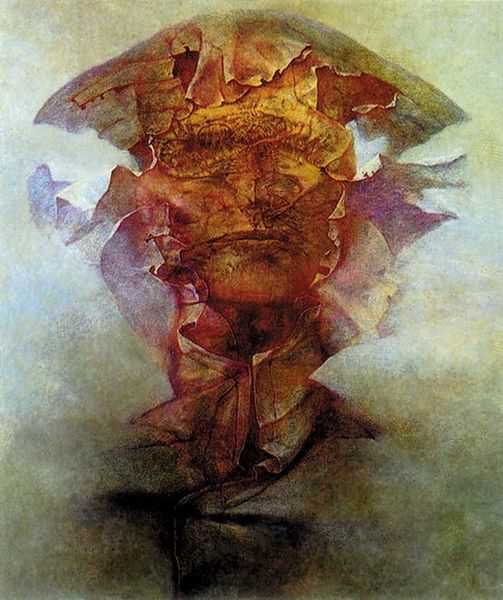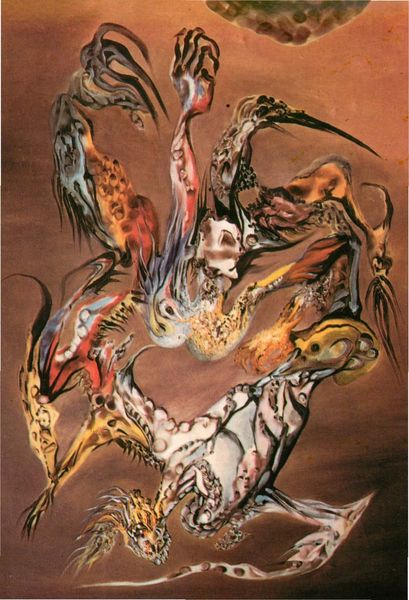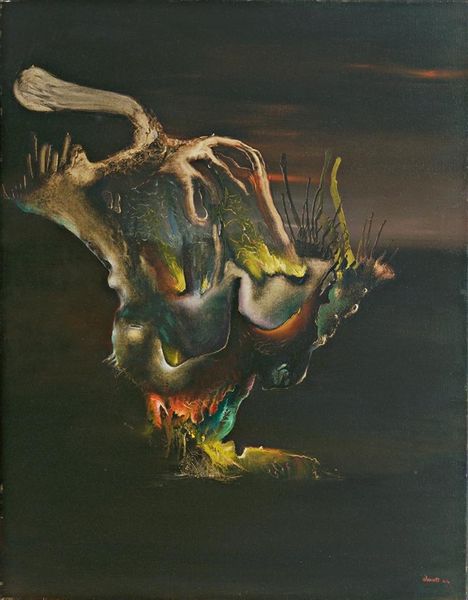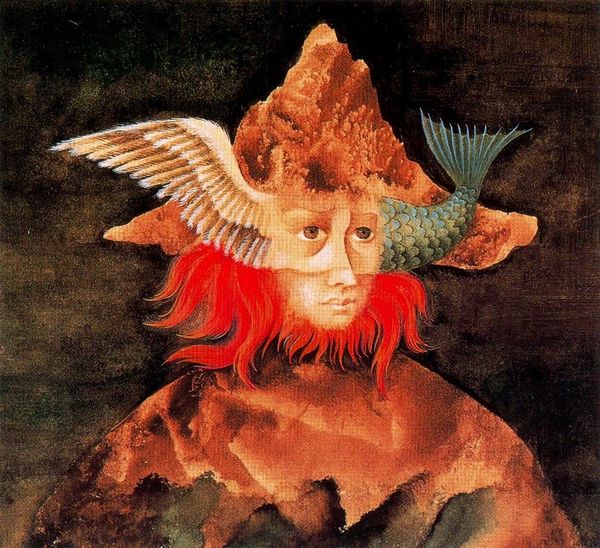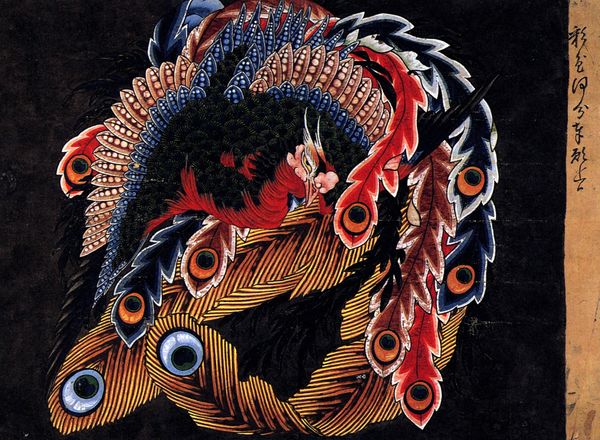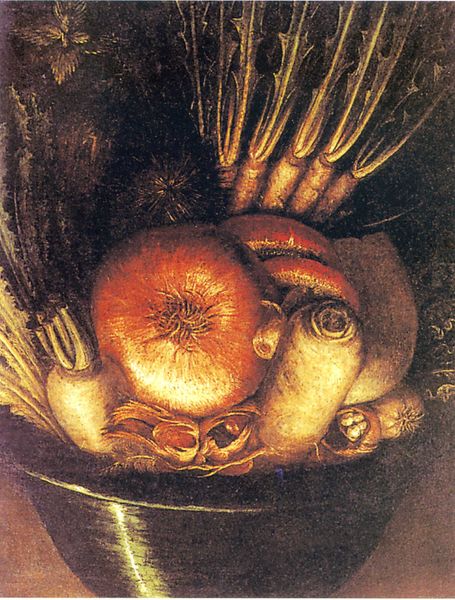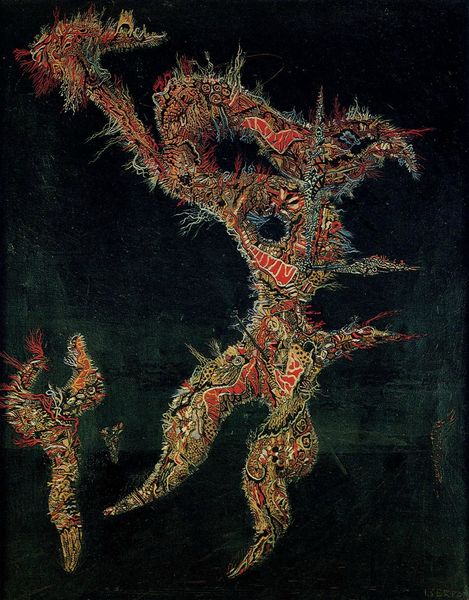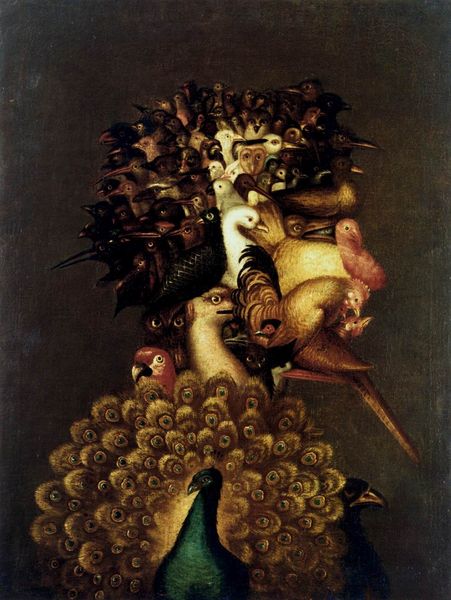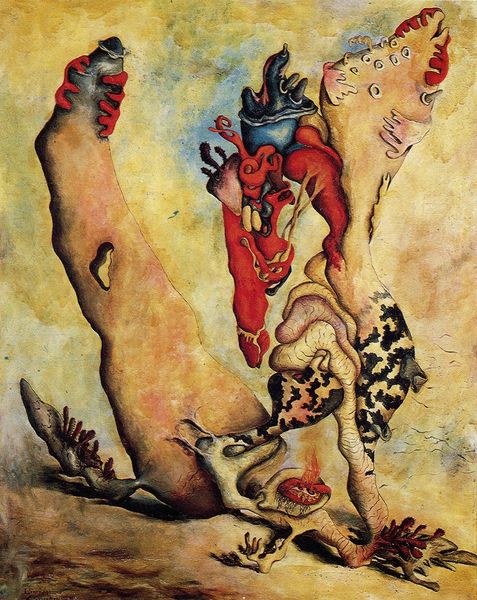
#
allegories
#
abstract expressionism
#
fish
#
abstract painting
#
animal
#
symbol
#
impressionist landscape
#
possibly oil pastel
#
oil painting
#
fluid art
#
acrylic on canvas
#
underpainting
#
painting painterly
#
expressionist
Dimensions: 67 x 52 cm
Copyright: Public domain
Curator: What an odd, striking image! It’s both fascinating and a little disturbing. Editor: Well, let’s delve in. This is "Water," painted in 1566 by Giuseppe Arcimboldo. It now resides in the Kunsthistorisches Museum in Vienna. Arcimboldo was a master of visual puns. Curator: Visual puns, indeed! At first glance, it appears to be a portrait, but on closer inspection, the figure is entirely composed of various sea creatures. Look at the meticulous rendering of scales and fins. Were the artist using live animals as a model or illustrations of different sea life? The pearl necklace and drop earring also point to elite class display and consumption. Editor: Absolutely. Arcimboldo was working as a court painter for the Habsburgs. These composite portraits weren’t just whimsical inventions; they were carefully constructed allegories meant to convey meaning about the sitter. The production of such intricate images likely involved collaboration, careful planning, and considerable labor from studio assistants. The materials themselves—the pigments, the panel—would have been commodities in their own right. Curator: It's interesting how the artist manages to create a recognizable human profile. It must have been extremely painstaking and required significant craftsmanship to put it together so convincingly. The whole thing hints at themes of abundance, dominion over nature, and perhaps even the exotic nature of marine exploration at the time. What sort of sociopolitical signals do you believe the artist sends when compiling it like that? Editor: I think you’ve nailed it. In that period, visual displays were critical to projecting power. Arcimboldo transformed something as base as raw sea life, subjects of hunting and food, into symbols of power, painting them to the profile of noble. The pearls and sea-sourced treasure were signals, understood by those in court, that he had a specific, desirable status. Curator: Looking at how Arcimboldo transforms something visceral into a courtly object…it gives me new insights into the politics of material display. Editor: Indeed. Arcimboldo's "Water" shows us that the image wasn’t just for looking at. The image itself held political weight, revealing not just the ruler's wealth, but control and vision.
Comments
No comments
Be the first to comment and join the conversation on the ultimate creative platform.
